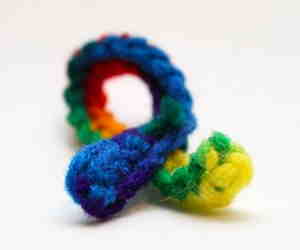Autism research at the crossroads
By Brady Huggett,
Spectrum News
| 01. 25. 2023
In April of 2021, Emilie Wigdor finished up a paper titled “The female protective effect against autism spectrum disorder” and put it on the pre-print server medRxiv. Wigdor is a Ph.D. student in human genetics at the University of Cambridge and the Wellcome Sanger Institute in the United Kingdom, and the paper had taken three years to complete. It was also the first paper on which she was first author. She was proud of that, and she took to Twitter to promote the work in an 11-part thread.
Wigdor isn’t particularly active on the platform; she mostly retweets, and she has just hundreds of followers, many of whom are geneticists and researchers like her. A handful of them offered admiring comments in replies to her post. But when the paper was published in the peer-reviewed Cell Genomics in June 2022 and she put out a similar 11-tweet thread on 8 June, the response was quite different.
This time, one of the first replies was from an autistic researcher in Australia, who tagged Ann Memmott and pointed to Wigdor’s thread as...
Related Articles
By Hannah Devlin, The Guardian | 12.06.2025
Couples undergoing IVF in the UK are exploiting an apparent legal loophole to rank their embryos based on genetic predictions of IQ, height and health, the Guardian has learned.
The controversial screening technique, which scores embryos based on their DNA...
By Frankie Fattorini, Pharmaceutical Technology | 12.02.2025
Próspera, a charter city on Roatán island in Honduras, hosts two biotechs working to combat ageing through gene therapy, as the organisation behind the city advertises its “flexible” regulatory jurisdiction to attract more developers.
In 2021, Minicircle set up a...
By Vardit Ravitsky, The Hastings Center | 12.04.2025
Embryo testing is advancing fast—but how far is too far? How and where do we draw the line between preventing disease and selecting for “desirable” traits? What are the ethical implications for parents, children, clinicians, and society at large? These...
By Pam Belluck and Carl Zimmer, The New York Times | 11.19.2025
Gene-editing therapies offer great hope for treating rare diseases, but they face big hurdles: the tremendous time and resources involved in devising a treatment that might only apply to a small number of patients.
A study published on Wednesday...




